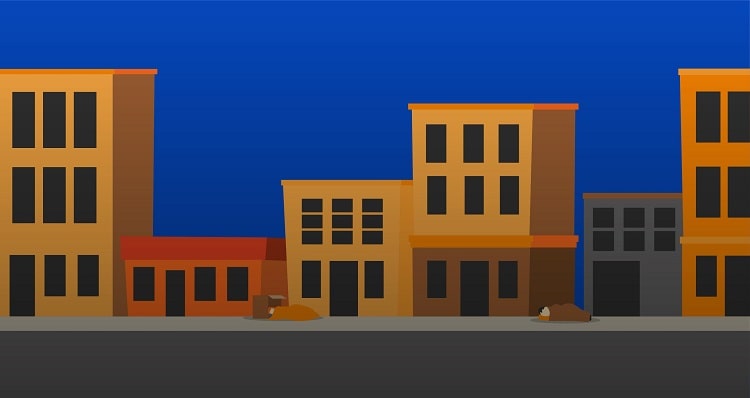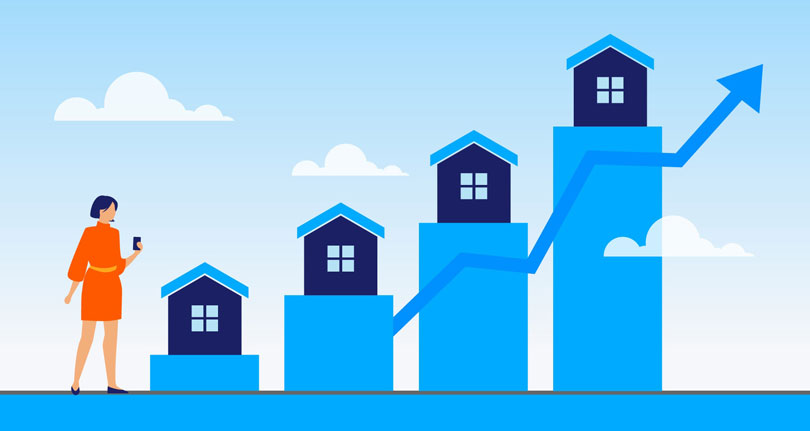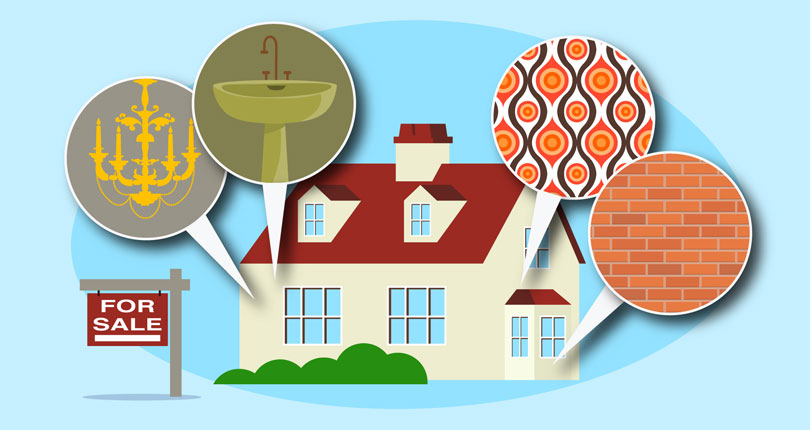Homelessness & Empty Homes - Trends & Analysis
Homelessness and vacant homes are a real concern across the U.S., costing local and federal governments and agencies billions of dollars each year in lost tax revenues and social spending.
The latest figures show that homelessness in the U.S. increased by 42.5% between 2018 and 2022. In terms of the number of people, this meant there were at least 582,642 people experiencing homelessness nationwide on any single night. [1] HUD Exchange, ‘2022 AHAR: Part 1 - PIT Estimates of Homelessness in the U.S.’ https://www.hudexchange.info/resource/6802/2022-ahar-part-1-pit-estimates-of-homelessness-in-the-us/
These figures are made worse when viewing them alongside the number of vacant properties, what this analysis refers to as ‘empty homes’. In 2021, there were over 15.6 million empty homes in the U.S. leaving, on average, 2.36% of all housing units per state in the U.S. vacant as of the latest figures in 2021. [2] United States Census Bureau, American Community Survey, DP04 SELECTED HOUSING CHARACTERISTICS https://data.census.gov/table?t=Housing+Units:Occupancy+Characteristics&g=0100000US$0400000&tid=ACSDP5Y2021.DP04
Key findings
- There is an average of 27.4 empty homes in the U.S. for each person experiencing homelessness.
- Mississippi has the highest ratio of vacant homes to people experiencing homelessness, with approximately 174.5 vacant homes for every individual.
- In 2022, an estimated 582,642 people were confirmed as experiencing homelessness in the U.S. on an average night.
- Since 2010 there has been a 1.59% decrease in the number of empty properties in the U.S., with 2021 seeing the lowest figures since 2010, of more than 156,000 vacant properties.
- In 2022, California recorded the most homeless people with 171,000 people experiencing homelessness, that’s more than 15 times the average across all other states (11,398 per state).
- Homelessness nationally has increased 9.51% from 2017 to 2022, however has decreased by 8.1% from 2010 to 2022.
- North Dakota saw the highest state percentage increase of unoccupied homes from 2010 to 2021 by 47.9%.
- However, North Dakota has the lowest homeless population of any state with 610 people recorded in 2022, over 10,700 people less than the state average.
- Delaware has seen the biggest increase in homelessness between 2010 and 2022, up by 141.2%, increasing from 982 in 2010 to 2,369 in 2022.
What is an ‘empty home’?
An empty home is what the government refers to as a ‘vacant housing unit’, which, for whatever reason, is not occupied by a citizen. This can include vacation homes but also properties which have sold but are not occupied. This is according to the United States Census Bureau, where all property data for this analysis was collected. You can see all exceptions and inclusions to property types in the official government definition. [3] United States Census Bureau, ‘Definitions and Explanations’ https://www.census.gov/housing/hvs/definitions.pdf
The research process
This study uses historic data taken from the United States Census Bureau’s ‘American Community Survey’ up to 2021, [4] United States Census Bureau, ‘American Community Survey (ACS)’ https://www.census.gov/programs-surveys/acs looking at occupied properties, as well as the national Housing and Urban Development Exchange’s analysis on people experiencing homelessness up to 2022. [5] HUD Exchange, ‘AHAR Reports’ https://www.hudexchange.info/homelessness-assistance/ahar/#2022-reports
The map below shows:
- Number of homeless people per state
- Number of empty properties per state
- The ratio of homelessness and vacant properties per state
- How this has changed per state since 2010
Use the map below to click through each year to see how each state compares, as well as how the actual numbers of empty homes and homelessness have changed since 2010.
Homelessness figures in the U.S. since 2010
| Year |
Homelessness |
| 2010 |
637,077 |
| 2011 |
623,788 |
| 2012 |
621,553 |
| 2013 |
590,364 |
| 2014 |
576,450 |
| 2015 |
564,708 |
| 2016 |
549,928 |
| 2017 |
550,996 |
| 2018 |
552,830 |
| 2019 |
567,715 |
| 2020 |
580,466 |
| 2021 |
380,630 |
| 2022 |
582,462 |
2021 figures lower due to less reporting during COVID-19 pandemic

2021 data reviewed only sheltered homelessness, therefore those homeless without shelter were not counted. This was due to fears of infection spreading during the COVID-19 pandemic.
The data shows that between 2010 and 2022, there has been a 8.57% decrease in the number of homeless people in the U.S. However, nationally, homelessness has increased by 5.71% from 2017 to 2022. More recent years have been particularly turbulent due to the economy being rocked by the COVID-19 pandemic and in 2022/2023 with rising inflation rates.
Using the latest population estimates, this would mean 0.17% of the U.S. population were experiencing homelessness in 2022. [6] United States Census Bureau, Growth in U.S. Population Shows Early Indication of Recovery Amid COVID-19 Pandemic https://www.census.gov/newsroom/press-releases/2022/2022-population-estimates.html People can become homeless for a variety of reasons, however the two most common reasons are someone not having a job to be able to afford to rent or buy a home, and the second is a lack of affordable housing in the area. [7] Wonderopolis, ‘How Does Someone Become Homeless?’ https://wonderopolis.org/wonder/how-does-someone-become-homeless#:~:text=Two%20of%20the%20most%20common,affordable%20housing%20where%20they%20live
States where homelessness is at its worst
In 2022, California had a homeless population that was 15 times larger than the national state average, exceeding 171,000, compared to the national average of 11,398 per state. California is the second most expensive state to purchase a home [8] CNBC, ‘These are the top 5 most expensive states to buy a house in 2022’ https://www.cnbc.com/2022/09/20/these-are-the-top-5-most-expensive-states-to-buy-a-house-in-2022.html (second only to Hawaii) in the U.S., therefore moving from homelessness to homeownership is a big challenge for residents of The Golden State.
The top five states when ranked by the number of people experiencing homelessness in 2022 are:
- California (171,521)
- New York (74,178)
- Florida (25,959)
- Washington (25,211)
- Texas (24,432)
States where homelessness has increased the most
Delaware has seen the biggest increase in homelessness of 141.2%, between 2010 and 2022, increasing from 982 in 2010 to 2,369 in 2022. An attributing factor to this is a high cost of living, with the state being 7% higher [9] RentCafé, ‘Cost of Living in Delaware’ https://www.rentcafe.com/cost-of-living-calculator/us/de/ than the rest of the U.S. in terms of affordability measured by housing, utilities, food, healthcare, transportation, and goods and services.
The top five states where homelessness has increased the highest from 2010 to 2022 are:
- Delaware (141.2%)
- Vermont (127.9%)
- South Dakota (90%)
- Maine (85.4%)
- California (38.9%)
States with the highest number of empty homes
Nationally, empty homes have decreased from just under 16 million (15,849,825) in 2010 to 15,601,829 in 2021 (the latest official data available), a 1.56% decrease.
Florida has the highest number of vacant properties, at 1,607,477 followed by Texas with 1,194,539 empty homes.
The five states with the highest number of vacant properties are:
- Florida (1,607,477)
- Texas (1,194,539)
- California (1,100,953)
- New York (919,028)
- North Carolina (639,249)
States that have seen the biggest increase in empty homes
North Dakota has the highest percentage change in the number of unoccupied homes from 2010 to 2021 at 47.9%. However, the Peace Garden State, has the lowest homeless population of any state with 610 homeless people in 2022, which is over 10,700 people less than the state average.
The states that have seen the highest increase in empty homes from 2010 to 2021 are:
- North Dakota (47.9%)
- Alaska (26.5%)
- Mississippi (19.9%)
- Louisiana (18.1%)
- Iowa (17.8%)
Empty homes compared to people experiencing homelessness
Comparing the datasets reveals that there is an average of 27.4 vacant homes per homeless person in the U.S. in 2022, this has increased from 25.6 in 2010. Importantly, this does compare 2022 homelessness figures with 2021 vacant property figures as these are the latest full-year datasets at the time of writing.
Mississippi has the highest number of vacant homes to homeless people, with 174.5 vacant homes per one person experiencing homelessness, which is 245.5% higher than the U.S. state average.
Methodology:
The research reviewed the number of occupied and unoccupied properties per state for each year between 2010 and 2021 (most recent available data) using the United States Census Bureau’s ‘American Community Survey.
The study also collected the historical data for homelessness from 2010 to 2022 using the HUD Exchange’s annual reports.
The ratios are then calculated by dividing the number of vacant properties in each state by the number of people experiencing homelessness in each state for a given year. The 2022 homeless data is compared to the 2021 empty homes data, as this was the latest data that could be provided.
Sources
- [1] HUD Exchange, ‘2022 AHAR: Part 1 - PIT Estimates of Homelessness in the U.S.’ https://www.hudexchange.info/resource/6802/2022-ahar-part-1-pit-estimates-of-homelessness-in-the-us/
- [2] United States Census Bureau, American Community Survey, DP04 SELECTED HOUSING CHARACTERISTICS https://data.census.gov/table?t=Housing+Units:Occupancy+Characteristics&g=0100000US$0400000&tid=ACSDP5Y2021.DP04
- [3] United States Census Bureau, ‘Definitions and Explanations’ https://www.census.gov/housing/hvs/definitions.pdf
- [4] United States Census Bureau, ‘American Community Survey (ACS)’ https://www.census.gov/programs-surveys/acs
- [5] HUD Exchange, ‘AHAR Reports’ https://www.hudexchange.info/homelessness-assistance/ahar/#2022-reports
- [6] United States Census Bureau, Growth in U.S. Population Shows Early Indication of Recovery Amid COVID-19 Pandemic https://www.census.gov/newsroom/press-releases/2022/2022-population-estimates.html
- [7] Wonderopolis, ‘How Does Someone Become Homeless?’ https://wonderopolis.org/wonder/how-does-someone-become-homeless#:~:text=Two%20of%20the%20most%20common,affordable%20housing%20where%20they%20live
- [8] CNBC, ‘These are the top 5 most expensive states to buy a house in 2022’ https://www.cnbc.com/2022/09/20/these-are-the-top-5-most-expensive-states-to-buy-a-house-in-2022.html
- [9] RentCafé, ‘Cost of Living in Delaware’ https://www.rentcafe.com/cost-of-living-calculator/us/de/
 Back to Data & Guides
Back to Data & Guides





